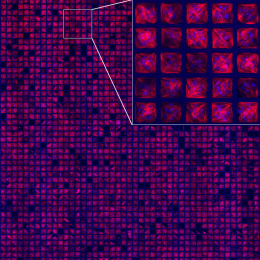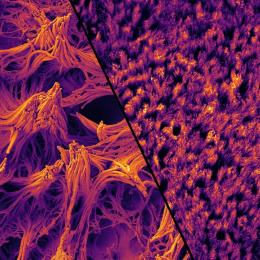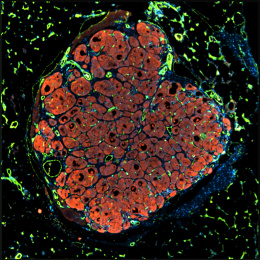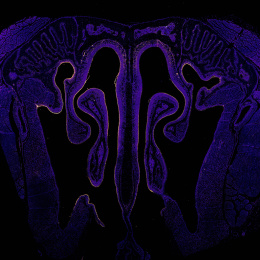Generating Models of Endometrial Tissues 1
Generating Models of Endometrial Tissues 1
Juan Gnecco, Alex Brown
MIT Department of Biological Engineering, Koch Institute at MIT
The uterus is one of the most complex and dynamic organ systems of the human body. In particular, the inner lining of the uterus, the endometrium, is responsible for the establishment of pregnancy and undergoes over 400 cycles of growth and shedding throughout a woman’s reproductive lifetime. Under the influence of hormones, such as estrogen and progesterone, it undergoes a cyclic and tightly orchestrated processes to allow embryo implantation. However, our understanding of this complex tissue’s function, as well as its reproductive diseases such as endometriosis and infertility, are poorly understood. Here, we see an endometrial gland from the in vivo human endometrium and its distinguishable columnar architecture from the side view. These images are stained for Nuclei (Dapi, Blue), Actin (Green) and Vimentin (Red).
We took this image using whole mount tissue of the human endometrium to understand what the architecture of the tissue looks like in an intact 3D in vivo environment and how we can extrapolate this information to generate in vitro models of the human endometrium.






